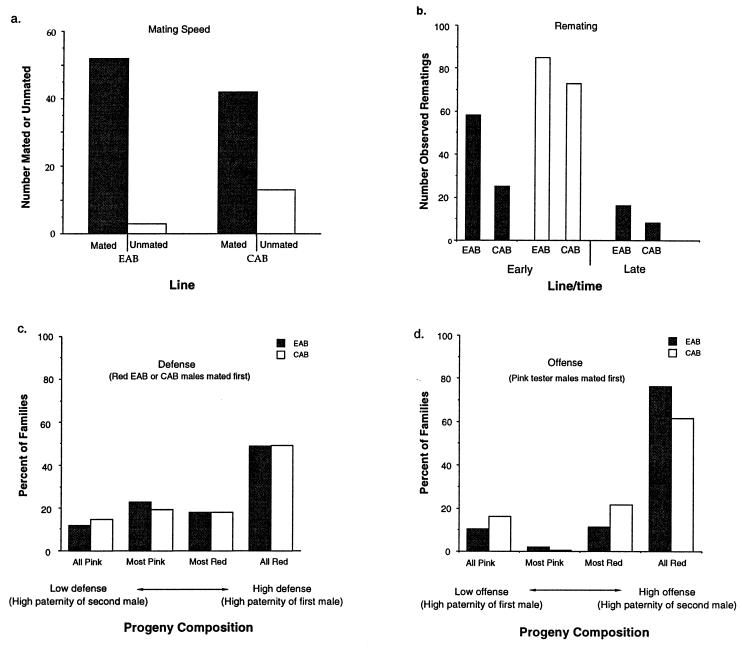Figure 1.
Males expressing synthetic Y chromosomes (line EAB) surpass controls (CAB) in all fitness measures except defense. (a) Mating speed is faster for the experimental males (P = 0.008, directed (24) conditional binomial exact test (25, CBET). (b) Remating rate is higher for the experimental males [▪, histograms from generation 38; □, histograms from the net offense assay in generation 40; P = 0.0002, directed, consensus P value (26) for the three χ2 contingency tests]. (c) Defense is the same for experimental and control males (P = 0.40, directed χ2 contingency test). The histogram tallies families from individually cultured females that had been first mated to EAB (▪, n = 147) or CAB (□, n = 152) males for 1 hr and then housed with pP competitor males for 24 hr. Families were divided into four discrete categories grading from low defense (all pink, females remated to the pP competitor males and no progeny produced from the first male’s sperm) to high defense (all red, no progeny produced from the pP competitor males). (d) Offense is higher for experimental (EAB) than control (CAB) males (P = 0.016, directed χ2 contingency test). The histogram tallies percent of families from individually cultured females, that had been first mated to pP competitor males for 1 hr and then housed with EAB (▪, n = 145) or CAB (□, n = 149) males for 24 hr. Families were divided into four discrete categories grading from low offense (all pink, progeny exclusively derived from the pP competitor males’ sperm and none from remating with the experimental or control males) to high defense (all red, females remated to experimental or control males and no progeny produced from the pP competitor male’s sperm).

